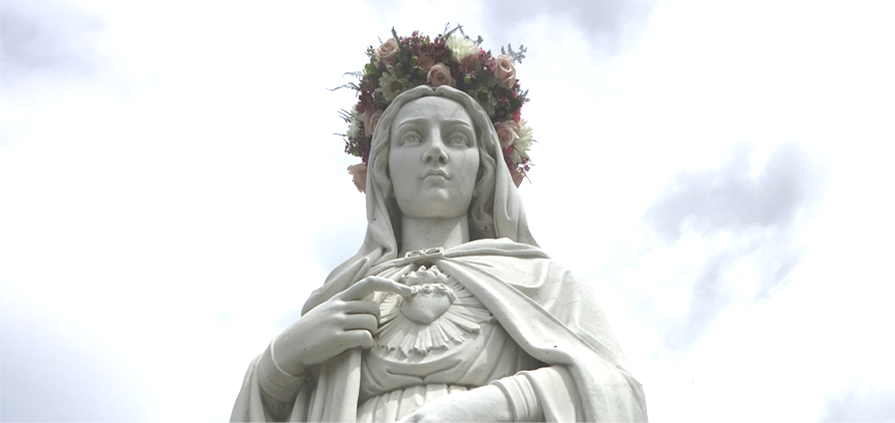
The Significance of Flower Crowns in Christianity
Flower crowns have a very long history. Today we associate them with little girls celebrating First Communion and of course, the Crowning of Mary in May, but they have existed for centuries in cultures all around the world. From 1967’s Summer of Love, to the Native Hawaiian Lays, flower crowns have always been an important symbol of celebration. Queen Victoria married Prince Albert in 1840, and not only did she popularize wearing a white wedding dress, but she also wore a crown of flowers.
In pre-Christian times, Ancient Greeks decorated the statues of their Gods with flowers on holy days. The Olympic games began as a festival to honor Zeus; the Greeks crowned their champions with olive wreaths, a symbol we still use for the Olympics today. The Ancient Romans continued the practice, and the Roman emperor wore a laurel wreath to represent his leadership.
It was the Crown of Thorns placed on Christ’s head that would bring the flower crown into the Christian faith. The Roman guards were mocking Christ’s kingship; instead of a true laurel crown, Christ was given one of thorns.
But Christianity embraced the Crown of Thorns as a symbol of our sins, and how Christ freely took them onto Himself. It pointed to His identity as King of Heaven and Earth.
But how did the flower crown become a symbol of Our Lady?
After her Assumption, Mary became the Queen of Heaven, and in religious art she is often depicted wearing a traditional gold crown. Early Christians had adopted the practice of adorning religious icons with flowers, and so Marian iconography also depicted the Queen of Heaven crowned with flowers.
Today we crown Mary with roses, and that too has an old tradition. Medieval Christians understood that in the Garden of Eden roses did not have thorns. It was only after Adam and Eve's betrayal that thorns appeared. But Mary, the Immaculate Conception, was preserved from our first parents’ sin and its effects.
For this reason, Mary was called ‘the Rose without Thorns.’ Through her, God initiated the saving work that Christ would complete—always with Mary’s cooperation—hereby freeing humanity from the bondage of sin that Adam and Eve had contracted in Eden.
The thorns of a rose crown serve as a reminder of Jesus’s sacrifice; the crown, made from natural materials, reminds us of Mary’s humanity, her closeness to us.
This crown that is not a crown has been immortalized by our faith as a symbol of devotion and passion. Female saints, many of whom were martyred for their faith, are depicted wearing rose crowns to show their devotion to Christ.
It is believed that the Rosary prayer got its name from this practice, as the circle of beads also resembles a crown. Traditional rosary beads were made of rose petals, and even today it is not uncommon to have a Rosary whose beads resemble a rose.
If you use a Snapchat filter to give yourself a flower crown, or you see one adorning the head of a flower girl at a wedding, know that this ancient practice is one that celebrates Our Lady and the hope she brought to the world.
- The second annual is sponsored by the Museum of Family Prayer. Photo entries are due by July 26, 2021. Prizes will be awarded. Helpful information and inspiration will be added to the contest webpage throughout the contest.
About Caleigh McCutcheon
Caleigh McCutcheon is the curator at the Museum of Family Prayer in North Easton, MA. She has a BA in English from Stonehill College and a MA in Art History from Glasgow University. Her Master’s thesis focused on the complexity and lasting power of the Pieta image in Christian art. She considers art to be one of the most powerful forms of prayer.

